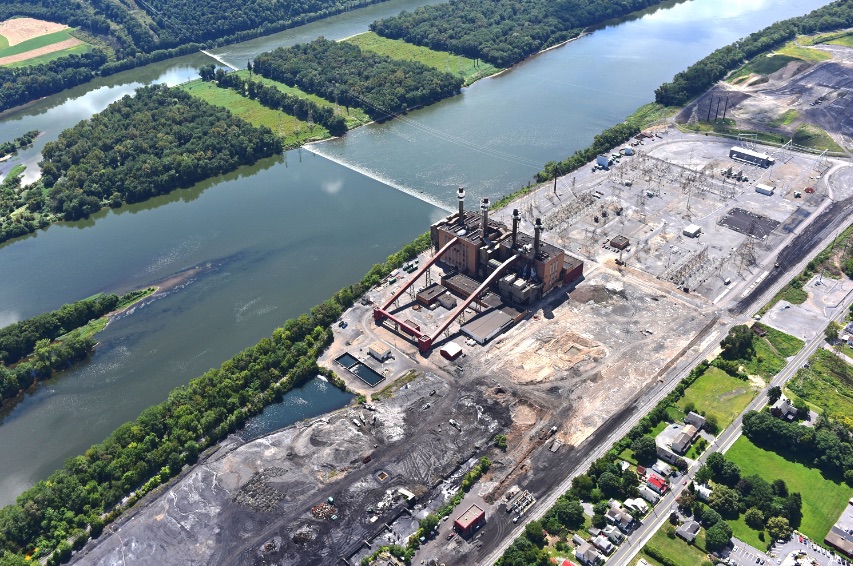April 2016, Vol. 243, No. 4
Features
For Aging Power Plants, Replacement Offers Clear Path Forward

Today’s generating companies (GENCOs) need help transforming aging power plants through retirement, replacement, retrofitting or redevelopment. Of the 7,000 generating facilities in the United States, many are over 40 years old, and most have historically burned coal for an overall efficiency of 30% or lower.
In today’s energy markets, these older plants are struggling to compete, especially in light of the availability of natural gas at historic low rates and ever-increasing environmental pressures. However, simply shutting down these old plants and building new plants elsewhere isn’t the only option.
Replacement of existing coal-fired, steam-turbine plants with modern, gas-turbine technology is an increasingly attractive option, as a cost-effective, environmentally sustainable solution. While natural gas is not always the answer, retrofitting older coal plants can extend plant life and minimize the cost of new pollution controls. Whether the EPA’s Clean Power Plan (CPP), with its historic requirements for reduced carbon emissions, is implemented, converting coal-fired plants to natural gas facilities is a significant tool for generators wishing to stay a step ahead of economic and environmental pressures.
From the Panda Hummel Station plant in Snyder County, PA, one of the country’s largest coal-to-natural gas replacement projects, to Florida Power & Light’s Cape Canaveral, Riviera Beach and Port Everglades oil-to-gas projects, putting a new plant on an existing plant site – while reducing emissions and becoming more cost-competitive – can be the easiest path forward. In recent years, the number of natural gas-fired plants has increased from 1,576 to almost 1,700. Many gas-turbine plants have been built on existing coal- or oil-fired generating sites.
When evaluating options for an aging coal-fired plant, the availability of natural gas may be the most important criterion. Nationally, the existing natural gas pipeline network is being built out, but certain areas of the country are underserved. While most “fatal flaws” can be overcome with a creative team, needing to construct a pipeline to get access to gas could compromise a project’s financial viability right out of the gate.
Additional criteria can make a site an ideal candidate for replacing coal-fired plants with gas turbines. For example, being able to build on the site of the former coal plant eases the permitting process, and having available working space, transmission access and other infrastructure eases developmental costs. Operating in a market that understands the value of capacity is also significant. Of course, the ability of cleaner natural gas to comply with state-specific environmental regulations – and a sense of whether those regulations will be changing significantly in the future, like the potential implementation of the CPP – is another substantial consideration.
Hummel Station, with its robust existing infrastructure, close proximity to the Marcellus Shale, and connectivity to the major Philadelphia and New York power markets, is a perfect example, but a plant need not be “perfect” to be a good candidate.
As with any development, major additions that the previous project did not include, from increased water use to significant additional noise, can lead to concerns among local stakeholders. In typical coal-to-gas conversions, these issues are rare. Questions of grid stability can often be more challenging to assess.
For example, anticipating some significant asset retirements in the market would help to justify converting an aging coal-fired plant into a 500-1,000 MW natural gas facility. Gas turbines offer an added benefit of fast-start capability measured in minutes instead of hours. Similarly, it’s important to examine oversupply vs. undersupply considerations, depending on where a facility falls within the utility or independent system operator (ISO) footprint.
Evaluating the reasons a plant is struggling can also yield valuable insights into whether replacement or retrofitting is the best solution. If there is a significant environmental issue that hasn’t been addressed, permitting and remediation may be an uphill battle. Alternatively, if a plant can make money bidding into the capacity market but is struggling to compete in the day-ahead, repowering can help solve the problem. Repowering can help generators secure long-term contracts with utilities that allow for real economic stability.
Even when all of the criteria are met, there is no “perfect” project. Every site poses its own challenges and opportunities, but almost all coal plants are facing the same pressures. Economic and environmental considerations – not to mention questions of stability and resiliency – are prompting more and more plants to consider repowering, and rightly so.
While there is no one-size-fits-all plan for repowering, there is a clear roadmap. Repowering is becoming an increasingly valuable option and it might help solve our national energy challenge.
By Ed Malley, Vice President and RE POWER™ Program Manager and Michael Keller, Senior Project Manager, TRC Companies, Inc.





Comments